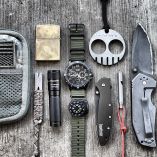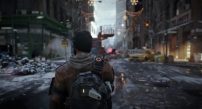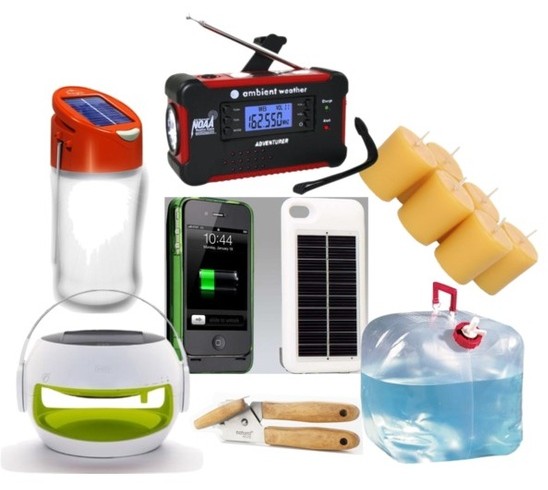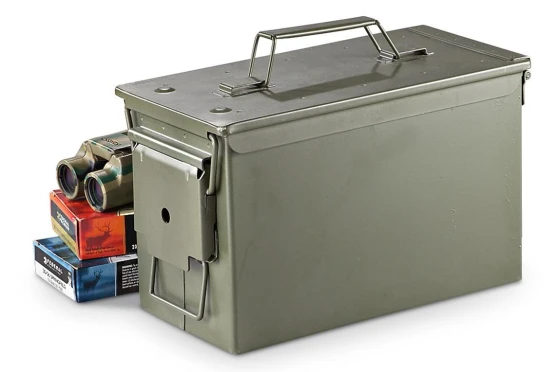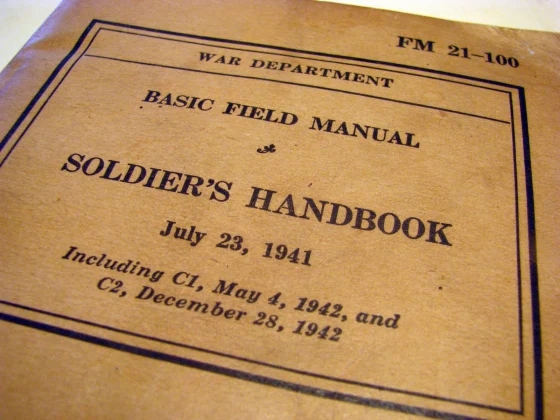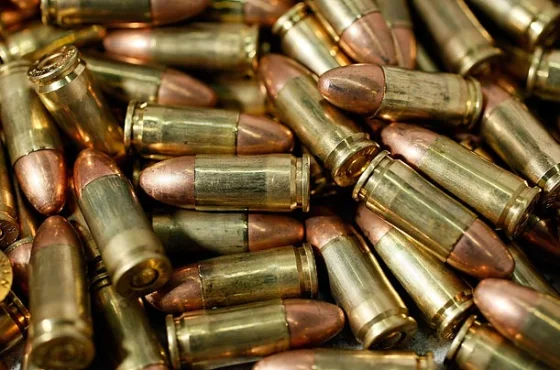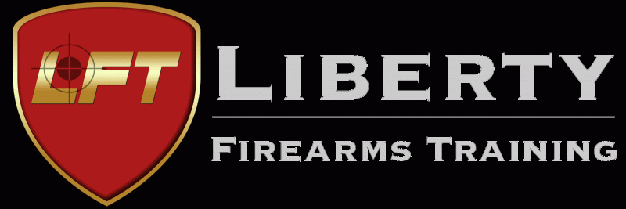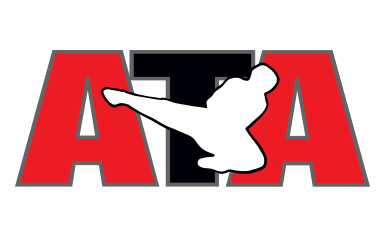
“The great body of our citizens shoot less as time goes on. We should encourage rifle practice among schoolboys, and indeed among all classes, as well as in the military services by every means in our power. Thus, and not otherwise, may we be able to assist in preserving peace in the world. The first step in the direction of preparation to avert war if possible, and to be fit for war if it should come, is to teach men to shoot!”
– President Theodore Roosevelt’s last message to Congress –
Contents:
- Seven Principles of Marksmanship
- Stance
- Grip
- Breath Control
- Sight Alignment
- Sight Picture
- Trigger Control
- Follow-Through
Seven Principles of Marksmanship:
- Stance
- Grip
- Breath control
- Sight alignment
- Sight picture
- Trigger control
- Follow-through
back to top
Stance:
 In the first photo our model is demonstrating an improper stance and grip. While normally standing you are balanced 50/50 forwards and backwards. When shooting your stance should be at least 60/40 (60% forward) like when playing tennis, racquet ball, or participating in martial arts. Our first model is at least 40/60 and looks as though she is scared of the gun and is trying to get as far away from it as possible. Also, she is demonstrating the classic “wrist supported by the weak hand” technique that is reminiscent of classic black & white gangster movies. This grip does nothing to stabilize the handgun.
In the first photo our model is demonstrating an improper stance and grip. While normally standing you are balanced 50/50 forwards and backwards. When shooting your stance should be at least 60/40 (60% forward) like when playing tennis, racquet ball, or participating in martial arts. Our first model is at least 40/60 and looks as though she is scared of the gun and is trying to get as far away from it as possible. Also, she is demonstrating the classic “wrist supported by the weak hand” technique that is reminiscent of classic black & white gangster movies. This grip does nothing to stabilize the handgun.
 The second photo demonstrates a proper stance (60/40) and a proper grip, including having her trigger finger off of the trigger until ready to shoot.
The second photo demonstrates a proper stance (60/40) and a proper grip, including having her trigger finger off of the trigger until ready to shoot.
back to top
Grip:
Gripping A Semi-Automatic Pistol:
Ladies’ Guide To Gripping A Semi-Automatic:
Gripping A Revolver:
back to top
Breath Control:
This simply refers to the technique to stop breathing before firing a shot. Breathing causes your body to move. Continuous breathing makes it difficult to maintain a steady sight picture. Before firing the shot, be sure you are comfortable and relaxed. Then exhale and stop breathing. This technique will help you in aiming by reducing the movement of your body and rifle in relation to the target. You should hold your breath no longer than about 8 to 10 seconds while aiming at the target. If you are not able to get your shot off within that time, stop, take a breath or two, and repeat the process.
back to top
Sight Alignment:
 The alignment of the eye, rear sight, and front sight. Consistent and proper sight alignment is necessary for accurate aiming. When using open sights with a post or bead front sight, sight alignment is correct when the front sight is centered in the rear sight notch and the top edge of the front sight is even with the top of the rear sight. With aperture or peep sights, sight alignment is correct when the front sight ring or top edge of the front sight post is centered in the rear sight aperture. When using a telescopic sight, proper sight alignment is achieved by positioning the eye to clearly see the entire field of view when looking through the scope.
The alignment of the eye, rear sight, and front sight. Consistent and proper sight alignment is necessary for accurate aiming. When using open sights with a post or bead front sight, sight alignment is correct when the front sight is centered in the rear sight notch and the top edge of the front sight is even with the top of the rear sight. With aperture or peep sights, sight alignment is correct when the front sight ring or top edge of the front sight post is centered in the rear sight aperture. When using a telescopic sight, proper sight alignment is achieved by positioning the eye to clearly see the entire field of view when looking through the scope.
back to top
Sight Picture:
The term sight picture describers the relationship between the eye, the aligned sights or scope, and the target. Sight picture will vary according to the type of sights and kind of target being used. A bead front sight should be aimed at the center of the target.
Center Mass Hold:
The top edge of a post front sight is centered on the bull’s-eye.

Center Mass Hold with Dot Sights:
I love dot sights, especially night sights that have Tridium inserts that glow in the dark. They ease making correct sight alignment in low-light conditions. During normal lighting condions you should ignore the dots and simply line up the top of the front sight post and the rear sight as seen in the picture on the left. In low-light conditions you may choose to line up the dots across the intended point-of-impact, as seen in the picture on the right. There are two reasons for this. The first is that when lining up the dots covers too much of the target and doesn’t lend itself to the shooter maintaining good situation awareness of the threat (more of them is hidden behind the sights). Second, with some sights when you have the dots aligned the front sight post might sit a little above the rear sight. This may not be the most accurate way of shooting, but in a low-light condition it will be close enough.

6 O’clock Hold:
The top edge of the front post is held at the bottom of the bull’s-eye (called a “6 o’clock hold”). This hold is great for “bull’s-eye” shooting where you will be shooting at the same exact size target at the exact same distance. I don’t think that it is the best for shooting different size targets at different size targets at varying distances, or for combat shooting, although one of our members, who is a firearms instructor in federal law enforcement, swears by this technique.


Focal Point:
When you have obtained the correct sight picture, the front sight should be clearly defined while the target and rear sight remain slightly out of focus. A scope reticle (usually crosshairs) is simply centered on the target and everything is brought into clear focus. In the next picture you see a correct focal point with the front sight sharp and clear, while the target and rear sight are slightly out of focus.
back to top
Trigger Control:
 To fire a good shot, pull the trigger straight to the rear when your hold is best. Slowly squeezing the trigger while maintaining a good sight picture works much better than trying to quickly jerk the trigger to catch that instant when the sight picture looks just right.
To fire a good shot, pull the trigger straight to the rear when your hold is best. Slowly squeezing the trigger while maintaining a good sight picture works much better than trying to quickly jerk the trigger to catch that instant when the sight picture looks just right.
There are two rules for good trigger control:
- Pull the trigger while holding steady.
- Pull the trigger straight to the rear smoothly and slowly, without disturbing your hold. Remember to concentrate on hold control with your focus on the front sight.
The photo to the right shows the proper placement of your trigger finger on the trigger, and how improper placement can cause you to pull or push the shot to the left or the right.
back to top
Follow-Through:
It is maintaining position, aim, breath control, hold control, and trigger control before and immediately after firing the shot. Follow-through allows the rifle to recoil and return to its natural point of aim after the shot is fired. This will minimize the possibility of any sudden movement (just before the shot is fired) that will disturb the sight picture and radically change the bullet’s path. If you remember where the bull’s-eye was located in, or on, the front sight when the shot was fired and can tell your instructor where it was, then you have followed through. This is the process that shooters refer to as “calling the shot.”

















